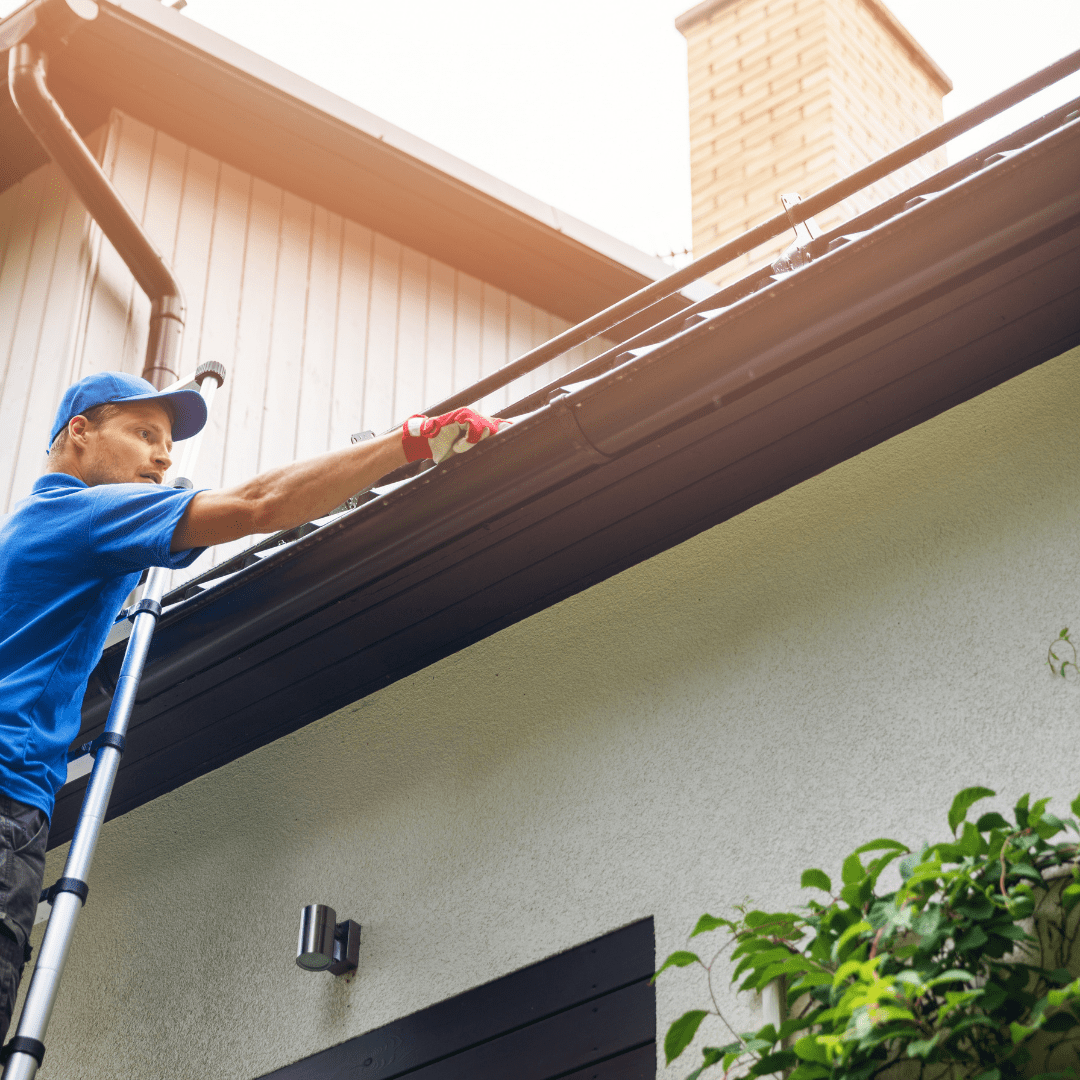

Australia is well known for it’s beautiful blue skies and sunny warm days, but it’s also no stranger to some wild weather. Heavy rain, damaging storms and the occasional cyclone are normal weather conditions for our tropical nation. Severe storms are responsible for more damage regarding insurance claims than other extreme conditions like floods, cyclones and even bushfires. That’s why the team at Professionals Burleigh have prepared 10 tips for you to prepare your home for the Aussie storm season.
1. Clear gutters and downpipes at least twice a year
Prevent excessive damage to your home during storms and clear gutters and downpipes. Water damage to blocked pipes and gutters can cause damage to internal plastering, rot beams and potentially cause structural damage in the foundations of your home. To prepare for storms you should be clearing drains and downpipes of any leaves, branches and other debris and ensure this is done at least twice a year.
2. Trim trees, branches and be aware of root damage
Any branches that fall near power lines and homes create significant fire risk, ensure you trim trees regularly and remove any dead branches from your property. Be mindful that root damage can be a major cause of tree failure and could lead to dead branches. If you’re unsure, contact an arborist for professional advice or a gardener to assist with trimming down trees.
3. Check your roof for damage to prevent any leakages
Prepare your home for storm season by maintaining it regularly. Check for sealing leaks, any cracked and displaced tiles and any other signs of damage that could cause leaks or send tiles flying in a severe storm.
4. Secure any outdoor items
Be mindful that items could go airborne and can cause extensive damage to your property and put lives at risk too. Tie down outdoor furniture, kids play equipment, put away pot plants and any other items that you have outdoors.
5. Protect your car from hail and tree damage
Get prepared for storm season by parking your vehicles under cover and away from trees. Ensure you have a full tank of petrol in case you need to evacuate your home during a severe storm. Hail can cause significant damage to your car, so it’s important to prepare for storms and consider purchasing a padded car cover to protect your vehicle.
6. Have a Home Emergency Plan
Be as prepared for storm season as possible, things to discuss and organise between the other household members are:
- How a severe storm might impact your home
- Where your exit points and evacuation meeting point is
- Where to go if you need to evacuate
- How to stay in contact if you’re separated
- Finding the safest room for shelter during a storm
- How you can safely turn off water, power and gas if needed
- What valuables should be taken with you in the event of an emergency
- Checking if your home, contents and car insurance is adequate and current
- What needs to be included in your home Emergency Kit
- Confirming your pets are microchipped and if not checking the tags are up to date and fastened securely
Review your Home Emergency Plan on a regular basis and update where necessary.
7. Prepare an Emergency Kit with basic supplies
Have an emergency kit prepared so you can be self-sufficient for at least 72 hours, it should also include basic supplies that could help you if you were to lose power. Your kit should include:
- Torches and spare batteries
- Battery operated radio
- Candles, lighters, matches
- Non-perishable foods items
- Pet food
- Can opener
- Toilet paper and paper towels
- Extra keys to the house and car
- Insect repellent
- Rubbish bags
- Essential medication
- Personal documents such as ID and insurance policies
- Home Emergency Plan including emergency contact details
If you live in a rural area or at a property that is prone to severe storms and flooding you might also want to consider adding the following:
- Mobile phone plus a charger
- Changes of clothing and shoes
- Bedding such as pillows, sleeping bags and blankets
- Toiletries
- A camping stove, gas burner or BBQ
- Tarps
- Sturdy gloves
Keep your Home Emergency Kit in a waterproof box that is easily accessible, check it regularly to replenish and restock if items are out of date.
8. Have a first aid kit
Whether it’s storm season or not, you should always have a stocked up first aid kit in your home. Here are some items your kit should include:
- Antiseptic wipes
- Band aids
- Dressings – adhesives, bandages, compression bandages and butterfly closures
- Gauze pads
- Surgical tape and safety pins
- Saline and hand sanitizer
- Electrolyte powders
- Pain relief medication
- Scissors and tweezers
- Disposable gloves
- Cold packs
- Thermometer
- First aid book
9. Keep updated
Listen for updates on the weather that are being issued to your area, gain as much information as you can to help you protect your family and your home. Listen to the radio, follow reports on the news and even keep an eye on the helpful websites such as the Bureau of Meterology, the Queensland Disaster Management website or the Queensland Government pages for disasters and alerts.
If your property is at serious risk listen out for Emergency Alert messages on your mobile, you may also find Emergency Services approach your home so stay alert.
10. Know where to call for help
The State Emergency Service (SES) is the best point of call when you need assistance during a flood or severe storm emergency. The SES can be contacted on 132 500, you can request assistance online or download their app to get into contact. If there is any life-threatening situations, call Triple Zero (000).








